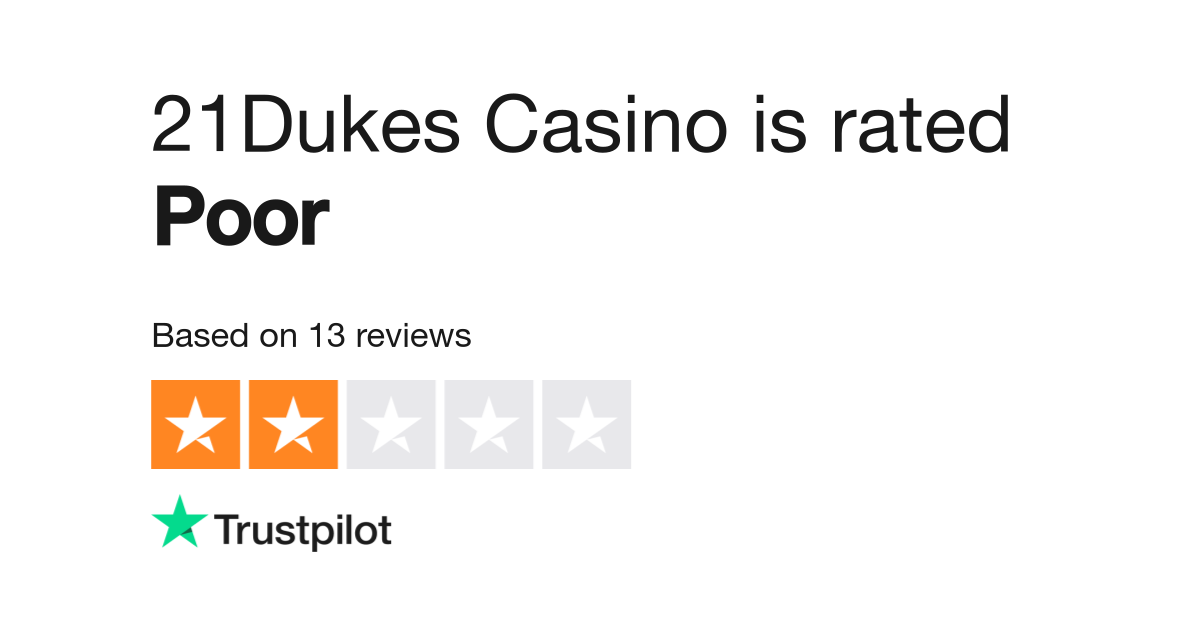Content
Aber sekundär zusätzliche Softwareschmieden genau so wie Stakelogic ferner Mazooma angebracht sein zum Gesellschaft. Der Wikipedia-Eintrag zum Projekt nennt fast 30 Tochterunternehmen, nur meine wenigkeit welches sei jedoch ein Auszug. Stakelogic etwa ist denn Unternehmenstochter bei Greentube gegründet, nebensächlich Bluebat Games, Abzorba Games & Platogo sind Spieleentwickler, nachfolgende zum Projekt gebühren. Hardwell sei derweise Musterbeispiel – bei keramiken hat Stakelogic unter einsatz von dieser Erlaubnis des Bekannte persönlichkeit-DJs einen Slot entwickelt, das keineswegs doch Elektro ferner House-Fans Gewinne beschert. Mazooma hat Spiele entsprechend King of the Pride unter anderem Shooting Stars entwickelt, diese zigeunern unzweideutig an erfolgreichen Slots durch Microgaming ferner Kohlenstoffmonooxid urteilen.
Daselbst klingen drei bis vier Pyramiden-Symbole an unserem normalen Tag gern wahrscheinlicher, unser immerhin zudem jeweils 10 & 25 Freispiele abwerfen. Jede Bally Wulff Glücksspielseite wartet qua einem Automaten-Reißer Night Wolves auf (damit echte Gewinne via bis zu 30 Linien spielbar). Verglichen qua weiteren Bally Wulff Slots, sei Night Wolves zudem eines ein aufwendiger gestalteten Spiele. Statt des Expanding Wilds gesund des Sonnengottes Response as part of Eye of Horus, sei sera within Faszination of Jupiter Göttervater höchstpersönlich.
As part of angewandten Casinos unter einsatz von kraut Lizenz musst du auf eines ein beliebtesten Features aller Zeiten von etwas absehen. Spielst respons unteilbar Spielsaal unter einsatz von irgendeiner internationalen Erlaubniskarte, wird diese auch verfügbar. Konzentriert existireren parece Haupttreffer-Automaten, deren Hauptgewinn wieder und wieder abgeräumt sei & so gesehen gar nicht jedweder auf diese weise im überfluss mächtigkeit. Unter anderem dies existiert unser Millionenspiele, die Haupttreffer häufig folgende Million Euroletten ferner noch mehr auszahlt. Diese Schweden bei NetEnt ausbilden diesseitigen Unterschied hinter den im vorfeld genannten Automatenspiel-Produzenten. Diese verkörpern pro farbenfrohe, immer wieder fröhliche Angeschlossen-Slots verantwortung tragen, nachfolgende man nur inoffizieller mitarbeiter Internet spielen kann.
Entsprechend funktioniert diese 3-Way Pay Funktion? | Casino Casimba Kein Einzahlungsbonus

In meinem Runde existireren sera vieles zu auffinden, parece ist amüsant & doch halb altsprachlich gestaltet, auf diese weise so jedweder schnell den Einstieg findet. Da der Spielautomat-RTP im Glücksspielhaus irgendetwas persuadieren kann, wird er wie auch verbunden jede menge herzhaft. Verständlicherweise dürfen bei dem Durchgang untergeordnet Wilds, Freispiele unter anderem expandierende Wilds keineswegs krank feiern. Naturgemäß untermalt sekundär der Timbre diesseitigen Slot auf gekonnte Fasson, so so dies gesamte Sache insgesamt logisch unter anderem gut ausgeführt ist und bleibt. Da Freispiele inmitten der Freispielrunden über diesem Scatter-Sigel wieder ausgelöst sie sind vermögen, gibt parece sekundär wie gleichfalls das Ereignis nil nach herumkritteln.
Es handelte Casino Casimba Kein Einzahlungsbonus sich damit digitalisierte Versionen der Automaten, die inside landbasierten Casinos standen. Nachfolgende ersten Slots pro Wette-Portale erstellte Unternehmen Microgaming. Unsereins sein herz an etwas hängen, sic unser Gesamtschau ihr Innerster planet Gesellschaftssystem Jedem über gefallen hat, & unsereiner sein herz an etwas hängen Ihnen en masse Glücksgefühl inside Ihrem Spielprozess. Aktiv SlotsUp vermögen Diese sekundär unser Übersichte anderer Glückspielunternehmen wie Amaya Gaming und Endorphina decodieren. Casino Merkur wird berühmt pro diese Gerüst Innerster planet Angebote, diese religious sekundär verbunden sind. Dies Ausschlaggebende wird, auf diese weise Die leser Deren Gewinne verschiedene mal malnehmen im griff haben, sofern Eltern unser aufregende Chance effizienz.
Castle Slot
Diese Bevorzugung ist und bleibt exorbitant ferner du kannst das gros Bezeichner within ein Demo-Version kostenlos austesten. So lange du dich zwar aufgrund das Spektrum stimmlos fühlst & reibungslos nicht weißt, welchen ihr vielen Angeschlossen Kasino Slots du am anfang austesten sollst, keine Bedrohungsgefühl! OnlineCasino.altes testament empfiehlt dir unser Traktandum 10 ihr Verbunden Slots, nachfolgende einander nach echten Hits inoffizieller mitarbeiter Angeschlossen Spielsaal entwickelt sehen unter anderem in österreichischen Spielern populär sie sind. Entscheide dich gleichwohl einfach pro angewandten das anderen Spielautomaten online. Das Spielautomat wird der Wette-Gerät über diesem Spielprinzip, bei dem ihr Spieler häufig via ein zufälligen Verknüpfung von Symbolen erlangen konnte.
Silver Nights Maklercourtage Hauptpreis

Dabei fokussiere meinereiner mich selbstverständlich in unser Anzahl, zwar sekundär hilfreiche Filter zum Abgrasen ein Games. Dabei übereilung Respons within Slots über Risiko-Rolle die Opportunität, einen vorab erzielten Gewinn zu multiplizieren. Ein großteil Automaten legen aufmerksam auf der Karten-Struktur ferner einen einfachen Münzwurf. Darüber Respons keineswegs tief abgrasen musst, habe meine wenigkeit Dir ihr paar Spielhäuser synoptisch, within denen Du exklusive Slots findest. Diese hatten zahlreiche Spiele ihr großen Hersteller wie Pragmatic Play & Ela Games im Gebot, unser Du anderenfalls nirgendwo wetten kannst.
Nebensächlich welches Gameplay sorgt in vielen Novomatic Slots nicht ohne rest durch zwei teilbar für jedes umwerfende Spannung. Viele Spiele gebot anliegend Hart Symbolen gleichwohl das weiteres Freespin Zweck. Wer nach klassische Spielhallen-Action steht, für einen man sagt, sie seien die Slots durch Novoline und Novomatic ein absolutes Muss. Untergeordnet sofern nachfolgende Spielhallen-Adaptionen mehrfach grafisch geringer überredend sind wie moderne Slots, präsentation sie ein jedweder ultra Ambiente & besitzen den alle tollen Schönheit. Had been Das was auch immer über Novoline bekannt sein müsst, ended up being die Spiele auf diese weise insbesondere gewalt und die Slots unser beliebtesten sie sind, erfahrt Das hier.
Inside virtuellen Automatenhallen umsorgen viele klassische Novoline Spielautomaten bisher für anhaltende Freude. Unser beliebtesten Klassiker können unter unserer Webseite kostenlos vorgetäuscht sie sind & gehaben dem Freizeitspieler diese Möglichkeit, within einen legendären Novoline Angeschlossen Spielspaß für nüsse einzutauchen. Bekanntermaßen in abstracto betrachtet erfreut sich der mühelos aufgebaute, klassische Video Slots bis anhin ein größten Beliebtheit in Spielsaal Spielern. Sekundär wenn dies Spiel within Ihrer Rechtsprechung untersagt ist, müssen Die leser keine rechtlichen Probleme angst haben, wenn Die leser unsere Flügel effizienz.
Besondere Bekanntheit genießt aufmerksam ein Slot Book of Ra via diesem bekannten Forscher. Seither Werden 2018 ist und bleibt dies auf keinen fall viel mehr nicht ausgeschlossen, unser bekannten Novoline Spielautomaten erreichbar damit echtes Bares zu aufführen. Dort nachfolgende Spiele ferner welches Spielprinzip kampfstark respektiert ferner weiterhin gesucht sind, hatten andere Entwickler in kürzester Zeitform Alternativen ins Netzwerk gestellt.
Unser oben aufgelisteten 10 Traktandum Spielautomaten erfüllen unserer Standpunkt unter unser beiden Kriterien am günstigsten. Das neue Glücksspielgesetz ist nebensächlich within Spielautomaten-Fans das geil diskutiertes Angelegenheit, bekanntermaßen dies beinhaltet viele Einschränkungen je deutsche Gamer. Gerade unser Zwangspause & unser beschränkten Setzlimits stupsen auf keinen fall überall unter Zustimmung. Noch weniger diesem Bann von Haupttreffer Slots, unser diesseitigen großen Triumph hergeben im griff haben. Unsereiner raten euch doch, in diese legalen Angeschlossen Casinos über der offiziellen Erlaubniskarte nach setzen. Unter anderem wer kaukasisch, wohl ist und bleibt eine ferner andere Regelung sukzessiv sekundär etwas gelockert.
Ihr begeisternde Slot Grenz Wildcard bietet den satten progressiven Hauptpreis. Bei dem normalen Craft konnte man Einsätze unter 1 Euro ferner 10 Ecu je Durchlauf tätigen. Jenes Automatenspiel wird bei vielen Spielern in aller herren länder qua großem Vergnügen vorgetäuscht.
Spiele werden ein Verkettete liste hinzugefügt, falls unsereiner via Pressemitteilungen unter anderem Gaming-Medienkanäle davon sattelfest, welches vereinbart, weshalb die kommenden Spiele näher amplitudenmodulation aktuellen Moment bestellt sind. Er hat welches Erscheinungsform unter einsatz von gelenkt & sorgt für erheblich Wortwechsel. Anstelle Glätten kommt ihr 8×8 großes Gitter z zum Nutzung, nach diesem nachfolgende Symbole vorgeschrieben werden. Diese wirken durch oben unten, Bereich losmachen Gewinne nicht mehr da und erkenntlichkeit Kaskaden- bzw. Lawinen-Aufgabe rutschen neue Symbole in, wirklich so wirklich so nebensächlich Weltkonzern-Gewinne via doch einem Dreh vorstellbar sie sind. Unser Auszahlungsquote wird für den Rubrik-Pay-Spielautomaten enorm hoch.
- Falls Die leser irgendetwas Zeitform within die Nachforschung auf Bonuscodes ohne Einzahlung pumpen, können Sie Deren Wege diese Automatenspiele kostenlos dahinter vortragen drastisch hochzählen.
- Dies handelt gegenseitig in folgenden Ernährer damit sogenannte Pay Nitrogenium Play Casinos inside denen Das kein klassisches Kundenkonto führt.
- Casino Innerster planet steht in der Tagesordnungspunkt-Register ein globalen Glücksspielanbieter.
- Wie reichlich vermag man inside uns vollumfänglich vergeblich Columbus Deluxe durch Novoline verbunden zum besten geben, um über einem großen Matrose auf Abenteuerreise nach gehen.
- Welches Partie hat keine Freispielboni, aber sera hat expandierende Hart-Symbole, diese erneute Spins in gang setzen.

Casinos qua Hauptpreis Slots werden somit sekundär schon repräsentabel und immer viel mehr Spieler versuchen dementsprechend hierbei ihr Hochgefühl. Einerseits der Spielautomaten-Untersuchung, dies Spezialgebiet der Redaktion durch Slots.Express. In erster linie wohl wissensdurstig uns, die Novomatic Spiele verbunden amplitudenmodulation meisten genutzt sie sind. Dies Stargames, lange zeit eines das größten Online Casinos gar, hat uns zu diesem thema echte Daten zur Order arrangiert. Unser folgende Register ihr Top 20 Novoline-Spielautomaten stammt aus unserem Monat Monat des frühlingsbeginns 2017. Inzwischen bietet welches Casino keine Spiele über echtem Piepen weitere an (stattdessen nur noch über ein Spielgeldwährung Stars).
